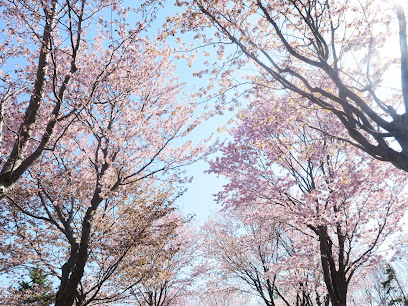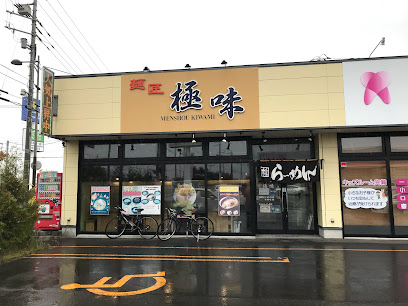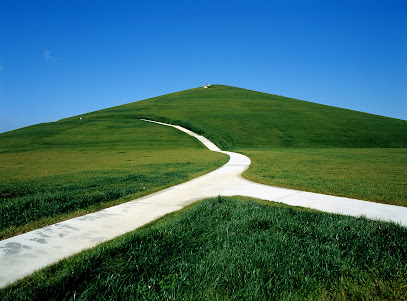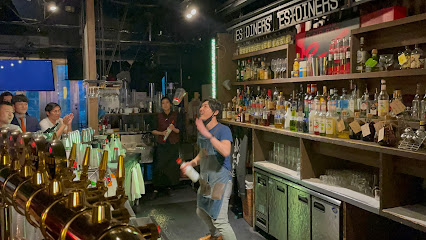
Moerenuma Park: Sapporo’s Urban Oasis
Discover Moerenuma Park in Sapporo: A stunning fusion of art and nature, offering panoramic views, recreational activities, and seasonal events in a serene urban setting.
Moerenuma Park is a marvel of modern landscape architecture located in the northeastern part of Sapporo, Japan. Designed by renowned sculptor Isamu Noguchi, the park is a perfect blend of art and nature, offering a unique experience for visitors. Covering an expansive area, it features a variety of attractions that cater to all ages and interests, making it an ideal destination for families, couples, and solo travelers alike. One of the park's highlights is the iconic Glass Pyramid, known as Hidamari, which houses art galleries, a restaurant, and a gift shop. The structure itself is a work of art, providing panoramic views of the park and its surroundings. The park’s vast open spaces are dotted with sculptures and art installations, each thoughtfully placed to enhance the natural beauty of the environment. Moerenuma Park also boasts a variety of recreational facilities, including playgrounds, sports fields, and a large fountain that puts on a spectacular show during the summer months. For those looking to relax and unwind, the park offers numerous walking and cycling paths, as well as serene ponds and lush greenery. Seasonal events and festivals add to the park's charm, making it a vibrant and dynamic place to visit throughout the year.
Local tips in Moerenuma Park
- Visit early in the morning to enjoy the tranquility and avoid crowds.
- Rent a bicycle at the park entrance to explore more of the expansive grounds.
- Check the schedule for fountain shows and seasonal events before your visit.
- Bring a picnic and enjoy a meal in one of the designated picnic areas.
- Wear comfortable shoes as the park covers a large area with many walking paths.
Moerenuma Park: Sapporo’s Urban Oasis
Moerenuma Park is a marvel of modern landscape architecture located in the northeastern part of Sapporo, Japan. Designed by renowned sculptor Isamu Noguchi, the park is a perfect blend of art and nature, offering a unique experience for visitors. Covering an expansive area, it features a variety of attractions that cater to all ages and interests, making it an ideal destination for families, couples, and solo travelers alike. One of the park's highlights is the iconic Glass Pyramid, known as Hidamari, which houses art galleries, a restaurant, and a gift shop. The structure itself is a work of art, providing panoramic views of the park and its surroundings. The park’s vast open spaces are dotted with sculptures and art installations, each thoughtfully placed to enhance the natural beauty of the environment. Moerenuma Park also boasts a variety of recreational facilities, including playgrounds, sports fields, and a large fountain that puts on a spectacular show during the summer months. For those looking to relax and unwind, the park offers numerous walking and cycling paths, as well as serene ponds and lush greenery. Seasonal events and festivals add to the park's charm, making it a vibrant and dynamic place to visit throughout the year.
Iconic landmarks you can’t miss
Moerenuma Park
Explore the harmonious blend of art and nature at Moerenuma Park in Sapporo, Hokkaido, a must-visit urban oasis for tourists.

Mt. Moere
Explore the breathtaking beauty of Mt. Moere, a serene park in Sapporo, Hokkaido, perfect for hiking, picnics, and nature appreciation.

Moerenuma Park East Gate
Experience breathtaking landscapes and art at Moerenuma Park East Gate, a unique urban oasis in Sapporo, Hokkaido, designed by Isamu Noguchi.

Sea Fountain
Discover the enchanting Sea Fountain in Sapporo's Moerenumakoen, where vibrant fountains meet serene landscapes for a perfect day of relaxation.

Play Mountain
Explore the enchanting Play Mountain in Sapporo, a family-friendly park offering playgrounds, walking trails, and beautiful picnic spots amidst Hokkaido's nature.

モエレ沼
Experience the tranquility and natural beauty of Moerenumakoen Lake, a serene escape in Sapporo, Hokkaido, perfect for relaxation and exploration.

Forest of Cherry Trees
Explore the enchanting Forest of Cherry Trees in Sapporo, where vibrant blossoms and serene nature await your discovery.

Tetra Mound
Experience the stunning Tetra Mound, a sculptural gem in Sapporo's Moerenumakoen Park, where nature and art unite for an unforgettable visit.

Music Shell
Experience the artistic blend of nature and music at the iconic Music Shell in Moerenuma Park, Sapporo's cultural jewel.

Unmissable attractions to see
Yurigahara Park
Explore the serene beauty of Yurigahara Park in Sapporo, a lush botanical garden and park perfect for relaxation and outdoor activities.

Satoland
Discover the charm of Satoland, Hokkaido's unique agricultural theme park, blending nature, education, and fun for all ages.

Mt. Moere
Explore the breathtaking landscapes and serene beauty of Mt. Moere, a must-visit park in Sapporo, Hokkaido, ideal for nature lovers and outdoor enthusiasts.

Moerenuma Park East Gate
Experience the harmonious blend of nature and art at Moerenuma Park, a tranquil retreat in Sapporo, Hokkaido, perfect for all travelers.

Sea Fountain
Discover the mesmerizing Sea Fountain in Moerenumakoen, a stunning attraction in Sapporo, where water dances to music amidst beautiful landscapes.

Play Mountain
Discover Play Mountain in Sapporo, a stunning park perfect for outdoor activities, family fun, and relaxing moments in nature all year round.

Forest of Cherry Trees
Experience the breathtaking beauty of the Forest of Cherry Trees in Sapporo, where vibrant blossoms and serene landscapes create a perfect escape.

Tetra Mound
Discover Tetra Mound in Sapporo, a stunning sculpture nestled in nature that offers a unique blend of art and tranquility, perfect for tourists and art enthusiasts!

Music Shell
Experience the captivating blend of nature and culture at Sapporo's Music Shell, a stunning outdoor venue for performances in Moerenumakoen Park.

Essential places to dine
十勝豚丼 いっぴん 札幌北十条店
Experience authentic Hokkaido flavors at Butadon Ippin in Sapporo – where delicious pork rice bowls await every visitor.

Pooh Yokocho
Experience authentic Hokkaido flavors at Pooh Yokocho in Sapporo - where every dish is a celebration of Japan's culinary heritage.

Restaurant Yuppie
Experience the fusion of Japanese and Western flavors at Restaurant Yuppie in Sapporo - a culinary treasure waiting for you!

TERRA Farm to Table
Savor the essence of Hokkaido at TERRA Farm to Table - where fresh local ingredients meet innovative culinary artistry.

十勝豚丼 いっぴん 札幌東雁来店
Experience the authentic taste of Hokkaido at Butadon Ippin in Sapporo—home to delicious butadon and traditional Japanese hospitality.

Tonkatsu Kazoku
Delight in the crispy goodness of authentic tonkatsu at Tonkatsu Kazoku in Sapporo - where tradition meets flavor.

Okadama Kitchen
Discover culinary delights at Okadama Kitchen, where Japan meets Western flavors in the heart of Hokkaido's airport.

ダイナーズ
Discover authentic Hokkaido flavors at ダイナーズ - A cozy diner in Sapporo serving delicious local cuisine.

L’enfant qui rêve
Experience authentic French cuisine at L’enfant qui rêve, a charming restaurant in Sapporo offering exquisite dishes and delightful ambiance.

Panier
Experience authentic Hokkaido flavors at Panier, a charming takeout restaurant nestled in Sapporo's picturesque Moerenumakoen.

Markets, malls and hidden boutiques
Mitsui Outlet Park Sapporo-Kitahiroshima
Experience the best of shopping at Mitsui Outlet Park Sapporo-Kitahiroshima, where quality meets affordability in a stunning Hokkaido setting.

Sapporo Factory
Experience Sapporo Factory: A Unique Shopping Mall Blending History, Culture, and Modern Retail in the Heart of Hokkaido.

Ario Sapporo
Discover Ario Sapporo, Hokkaido's ultimate shopping mall, where fashion, food, and fun come together in a vibrant atmosphere.

Sapporo Stellar Place
Explore Sapporo Stellar Place: Hokkaido's vibrant shopping mall for unique finds, diverse dining, and unforgettable experiences.

Moerenuma Park
Explore the artistic beauty and tranquility of Moerenuma Park in Sapporo, a perfect blend of art, nature, and recreation in Hokkaido.

Akarenga Terrace
Explore Akarenga Terrace in Sapporo, a vibrant shopping mall featuring local and international brands, delicious dining options, and a lively atmosphere.

NORBESA
Experience the vibrant shopping culture of Sapporo at NORBESA, offering a blend of retail, dining, and entertainment for every traveler.

Hands Sapporo Store
Explore the Hands Sapporo Store for unique gifts, home goods, and local treasures in the heart of Hokkaido, Japan.

Higashi-Kariki Shopping Center
Experience the bustling atmosphere of Higashi-Kariki Shopping Center, a must-visit shopping mall in Sapporo offering diverse shops and delightful dining options.

Mt. Moere
Explore Mt. Moere, Sapporo's serene park offering breathtaking views, hiking trails, and year-round natural beauty.

Moerenuma Park East Gate
Immerse yourself in the beauty of Moerenuma Park East Gate, a stunning blend of nature and art in Sapporo, Hokkaido.

SANRIO GIFT GATE
Explore the magical world of SANRIO GIFT GATE in Sapporo, where kawaii culture comes to life through an array of adorable merchandise.

Tetra Mound
Explore the stunning Tetra Mound, a unique sculpture in Sapporo's Moerenuma Park, blending art, nature, and breathtaking views.

おもちゃの森sapporo 木のおもちゃ専門店
Discover the charm of wooden toys at Omocha no Mori, a magical gift shop in Sapporo, offering unique treasures for children and the young-at-heart.

Essential bars & hidden hideouts
THE NIKKA BAR
Discover the essence of Japanese whisky at The Nikka Bar, Sapporo's renowned destination for premium drinks and a cozy atmosphere.

Beer Bar NORTH ISLAND
Discover the best of Hokkaido's craft beers at Beer Bar NORTH ISLAND, where stunning views meet exceptional flavors in Sapporo.

The Long Bar
Immerse yourself in Sapporo's nightlife at The Long Bar, where vibrant drinks and a welcoming atmosphere await you!

Flair bar es
Flair Bar es in Sapporo: where nightlife meets culinary excellence in a vibrant atmosphere.

the bar nano. gould.
Discover the vibrant nightlife at Bar Nano. Gould, where unique cocktails and a lively atmosphere create unforgettable memories in Sapporo.

BAR KNIGHT
Discover BAR KNIGHT, Sapporo's lively bar offering a captivating blend of craft cocktails and vibrant nightlife in a welcoming atmosphere.

L’enfant qui rêve
Experience the finest in French cuisine at L’enfant qui rêve, a charming Sapporo restaurant offering exquisite dishes and an elegant dining atmosphere.

Au Grenier (オ・グルニエ)
Experience the elegance of Au Grenier, a premier wine bar in Sapporo, where fine wines meet a cozy atmosphere for unforgettable evenings.

ENJOY BAR ふにふにランド(Instagram@enjoybarfunifuniland)
Experience the vibrant nightlife of Sapporo at ENJOY BAR ふにふにランド, a lively bar with creative cocktails and a welcoming atmosphere.

Panier
Discover Panier, a charming takeout restaurant in Sapporo's Moerenumakoen Park, offering delicious local flavors in a serene setting.

Local Phrases
-
- Helloこんにちは
[konnichiwa] - Goodbyeさようなら
[sayonara] - Yesはい
[hai] - Noいいえ
[iie] - Please/You're welcomeどうぞ
[douzo] - Thank youありがとう
[arigatou] - Excuse me/Sorryすみません
[sumimasen] - How are you?お元気ですか?
[ogenki desu ka?] - Fine. And you?元気です。あなたは?
[genki desu. anata wa?] - Do you speak English?英語を話せますか?
[eigo o hanasemasu ka?] - I don't understandわかりません
[wakarimasen]
- Helloこんにちは
-
- I'd like to see the menu, pleaseメニューを見せてください
[menyuu o misete kudasai] - I don't eat meat肉を食べません
[niku o tabemasen] - Cheers!乾杯!
[kanpai!] - I would like to pay, pleaseお会計をお願いします
[okaikei o onegai shimasu]
- I'd like to see the menu, pleaseメニューを見せてください
-
- Help!助けて!
[tasukete!] - Go away!行って!
[itte!] - Call the Police!警察を呼んで!
[keisatsu o yonde!] - Call a doctor!医者を呼んで!
[isha o yonde!] - I'm lost迷子です
[maigo desu] - I'm ill具合が悪いです
[guai ga warui desu]
- Help!助けて!
-
- I'd like to buy...買いたいです...
[kaitai desu...] - I'm just looking見てるだけです
[miteru dake desu] - How much is it?いくらですか?
[ikura desu ka?] - That's too expensiveそれは高すぎます
[sore wa takasugimasu] - Can you lower the price?値段を下げてもらえますか?
[nedan o sagete moraemasu ka?]
- I'd like to buy...買いたいです...
-
- What time is it?今何時ですか?
[ima nanji desu ka?] - It's one o'clock一時です
[ichiji desu] - Half past (10)十時半です
[juuji han desu] - Morning朝
[asa] - Afternoon午後
[gogo] - Evening夕方
[yugata] - Yesterday昨日
[kinou] - Today今日
[kyou] - Tomorrow明日
[ashita] - 1一
[ichi] - 2二
[ni] - 3三
[san] - 4四
[shi] - 5五
[go] - 6六
[roku] - 7七
[shichi] - 8八
[hachi] - 9九
[kyuu] - 10十
[juu]
- What time is it?今何時ですか?
-
- Where's a/the...?...はどこですか?
[...wa doko desu ka?] - What's the address?住所は何ですか?
[juusho wa nan desu ka?] - Can you show me (on the map)?地図で見せてもらえますか?
[chizu de misete moraemasu ka?] - When's the next (bus)?次の(バス)はいつですか?
[tsugi no (basu) wa itsu desu ka?] - A ticket (to ....)チケットをください(...まで)
[chiketto o kudasai (...made)]
- Where's a/the...?...はどこですか?
History of Moerenuma Park
-
Moerenuma Park is situated on the former site of a landfill, which underwent significant transformation in the late 20th century. However, the area's history dates back thousands of years, with evidence of Jomon period settlements in the larger Sapporo region. Artifacts such as pottery and tools indicate that indigenous Ainu communities inhabited the surrounding areas, utilizing the rich natural resources.
-
In the early 1980s, renowned Japanese-American artist and landscape architect Isamu Noguchi was commissioned to design a park that would blend art and nature. His vision was realized in 1982 when the Moerenuma Park project was initiated, transforming the former landfill into a stunning public space. Noguchi's design philosophy emphasized harmony with nature, leading to the creation of unique structures such as the iconic 'Sea of Clouds' and the 'Glass Pyramid'.
-
Moerenuma Park was officially completed and opened to the public in 2002, becoming a symbol of urban renewal and artistic integration in Sapporo. The park spans approximately 200 hectares and features various landscapes, sculptures, and recreational facilities. It reflects Noguchi's belief in the importance of public art and green spaces for community well-being.
-
Since its opening, Moerenuma Park has served as a venue for various cultural events and festivals, enhancing its role in the community. Art exhibitions, music festivals, and seasonal events allow visitors to engage with the space in diverse ways. The park has become a beloved destination for both locals and tourists, showcasing Sapporo's commitment to integrating culture, nature, and art.
-
Moerenuma Park has garnered international recognition for its innovative design and artistic value, contributing to Sapporo's reputation as a city that values creativity and environmental stewardship. The park's influence extends beyond its borders, inspiring other urban projects in Japan and around the world that seek to harmonize natural landscapes with artistic expression.
Moerenuma Park Essentials
-
Moerenuma Park is accessible via public transport from various neighborhoods in Sapporo. The nearest subway station is Moerenuma Koen Station on the Tozai Line. From Sapporo Station, take the Tozai Line to the end of the line, which is just a short walk from the park. Alternatively, you can take bus routes that serve the area, such as the Donan Bus from Sapporo Station, which provides direct service to the park.
-
Inside Moerenuma Park, walking and cycling are the best ways to explore. The park has well-maintained paths for pedestrians and cyclists. Rental bicycles are available at the park entrance during the warmer months. Additionally, the park is expansive, so visitors should wear comfortable shoes to enjoy the various sculptures, playgrounds, and landscapes.
-
Moerenuma Park is generally a safe area for tourists. However, as with any public space, it is important to remain vigilant. While Sapporo has a low crime rate, avoid isolated areas of the park after dark. Stick to well-lit paths and keep personal belongings secure. There are no specific high-crime areas targeting tourists in this neighborhood.
-
In case of emergency, dial 110 for police assistance or 119 for fire and ambulance services. There are first aid stations located within the park. Always carry a portable charger for your phone to ensure you can contact emergency services if needed. It is advisable to have travel insurance that covers medical emergencies.
-
Fashion: Do wear comfortable and weather-appropriate attire, especially during outdoor activities. Don't wear overly formal clothing, as the park has a casual atmosphere. Religion: Do respect the park's artistic installations and not climb on sculptures. Public Transport: Do follow the rules of public transportation while getting to the park. Don't eat or drink on public transport. Greetings: Do greet locals with a polite nod or smile. Eating & Drinking: Do try local snacks from vendors near the park. Don't litter; keep the park clean.
-
To experience Moerenuma Park like a local, visit during the early morning or late afternoon to avoid crowds. Join local cycling groups that often use the park for riding and socializing. Engage with park staff, who can provide insights into the art and design of the park. If you're visiting during winter, consider joining locals for snowshoeing or enjoying the winter illuminations. Don't miss the seasonal events hosted in the park, which offer a glimpse into local culture and traditions.
Nearby Cities to Moerenuma Park
-
Things To Do in Kanazawa
-
Things To Do in Tokyo
-
Things To Do in Nagoya
-
Things To Do in Kyoto
-
Things To Do in Nara
-
Things To Do in Osaka
-
Things To Do in Hiroshima
-
Things To Do in Chuncheon
-
Things To Do in Pohang
-
Things To Do in Andong
-
Things To Do in Gyeongju
-
Things To Do in Ulsan
-
Things To Do in Daegu
-
Things To Do in Seoul
-
Things To Do in Busan









